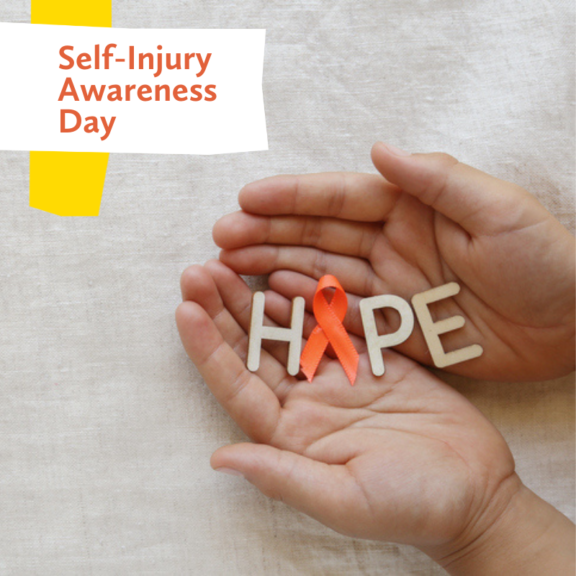
Self-Injury Awareness Day
Know the Signs, Save a Life
The 1st day in March is Self-Injury Awareness Day. Self-injury has recently increased among US youth due to increased feelings of isolation during the pandemic. Know the signs and how to help; you could save a child’s life.
What is Self-injury and self-injury awareness?
The first day in March is Self-Injury Awareness Day. Today, people wear orange or draw a butterfly on their wrists to spread awareness, educate, and bring hope to those who are suffering from the practice of self-harm. The orange ribbon represents hope to end a misread problem and promotes the eradication of common misconceptions about those suffering from this behavior. The act of drawing butterflies comes from the Butterfly Project, a movement designed to support sufferers on their journey toward healing. Simply draw a butterfly on the part of your body you feel compelled to self-harm and name it after a friend, family member, or loved one. This technique is a positive alternative to other harm reduction strategies such as snapping a rubber band. Those who do not self-harm may also participate in the Butterfly Project to show support and spread awareness.
Whom does it Affect?
Across more than 40 countries about 17% of the population (almost 2 million people) will self-harm at some point during their lifetime. The average age of the first incident is 12-14 years old. On average only about half of those that self-harm seek help, turning mostly to loved ones rather than licensed professionals. Someone you know and love could be suffering and may one day turn to you for help.
Know the Signs
Dr. Kristen Eastman, a psychiatric doctor with the Cleveland Clinic, suggests parents look out for these signs and symptoms:
- Injuries consistent with cutting, scratching, burning, or hitting
- Multiple similar injury marks on your child’s skin in close proximity to each other
- A fascination with self-harm
- A desire to constantly hide their skin
- Increasing anxiety, stress, or symptoms of depression
- A triggering event such as a loss or rejection
- Isolating themselves from friends and family
There is Hope. There is Help.
Support at home
This may be a sensitive subject, but there are ways you as a parent can help your child at home. Mental Health America recommends these tips on what parents should and shouldn’t do to support their child.
What to Do:
- Be patient, healing takes time
- Learn more about underlying causes associated with self-injury
- Address the issue as soon as possible; waiting could make things worse
- Validate your child’s feelings, not the behavior
- Speak to your child using calm, reassuring tones
- Check in on how your child is doing regularly
- Ask them what they need for support to stop self-harming
- Give praise for any positive change or progress
- Take care of yourself as well
- Hold on to hope, recovery may take time but things will get better
What Not to Do:
- Don’t think of ongoing or relapsed self-injury as failures or attention-seeking behavior
- Don’t respond in harsh or hurtful ways such as screaming, threats, insults, or punishments
- Don’t fight for power or control of the situation
- Don’t rationalize the behavior by thinking of self-injury as a phase that will go away with time
- Don’t minimize the seriousness of the practice to your child
- Don’t isolate your child
- Don’t focus only on the act of self-injury and not the underlying issues causing the behavior
Professional Support
Self-injury is a behavior resulting from underlying mental health concerns, and not a phase related to the age of a child. Even though support from friends and family is an important part of recovery, help from a licensed professional is just as crucial. To learn more about our Outpatient Mental Health services and all the services in our continuum of care, submit the form below.
Contact Us
"*" indicates required fields
